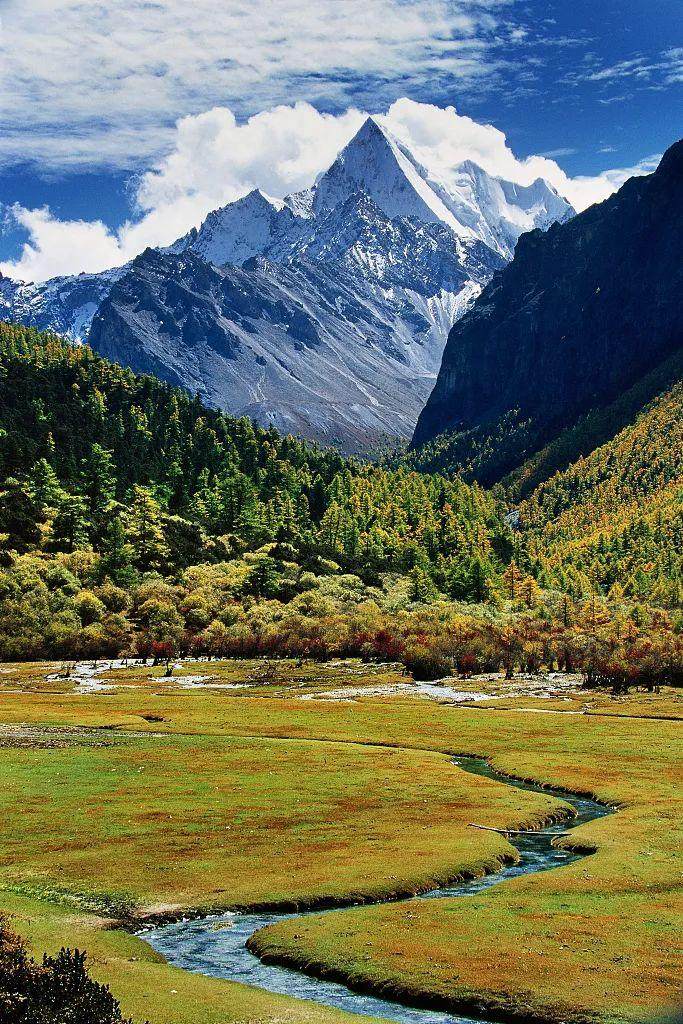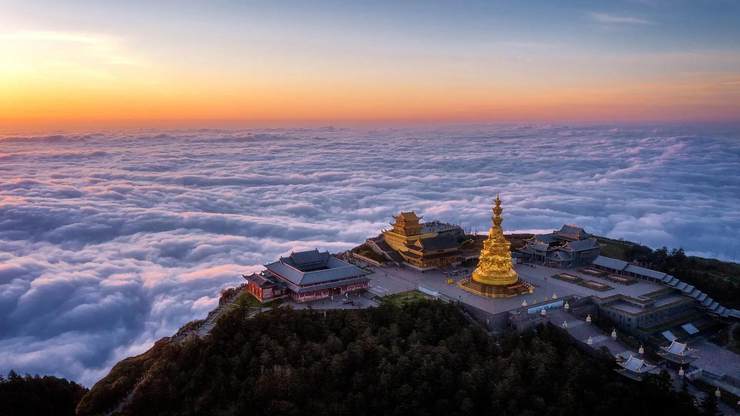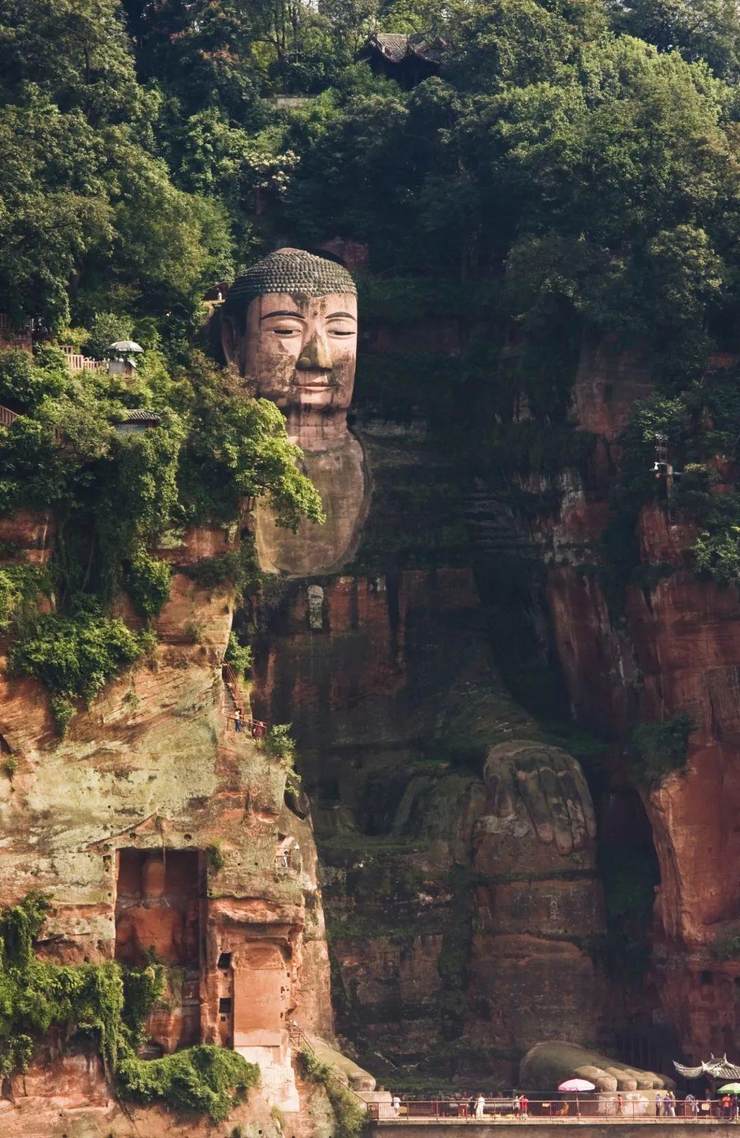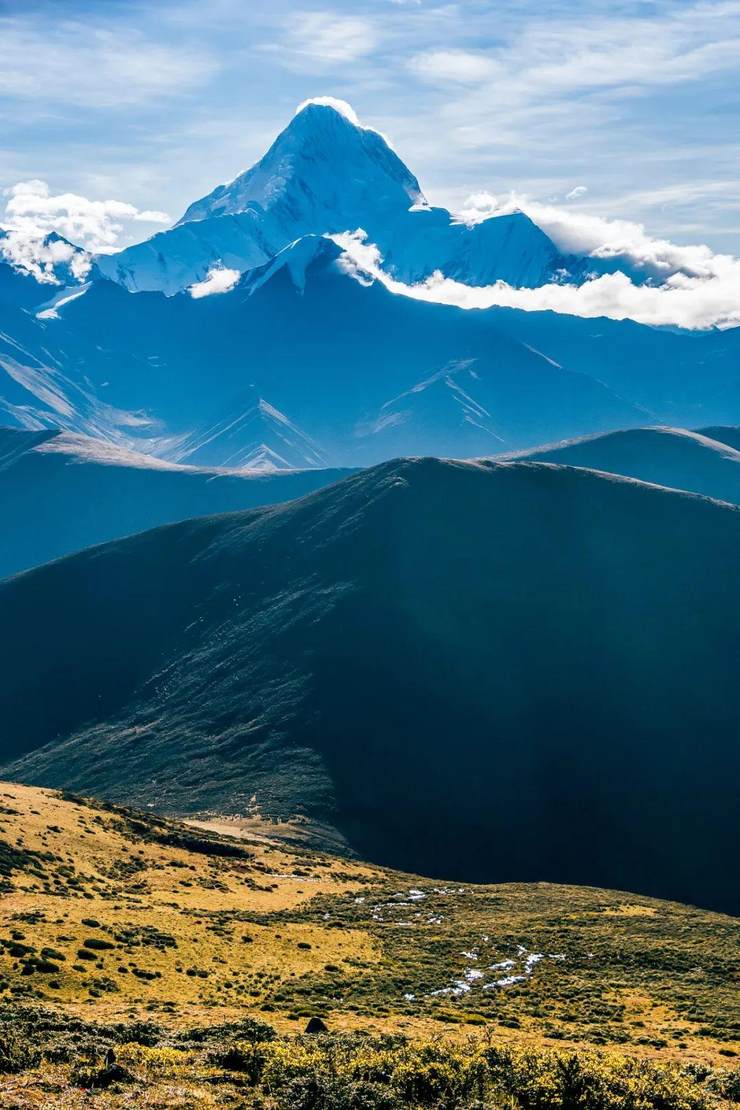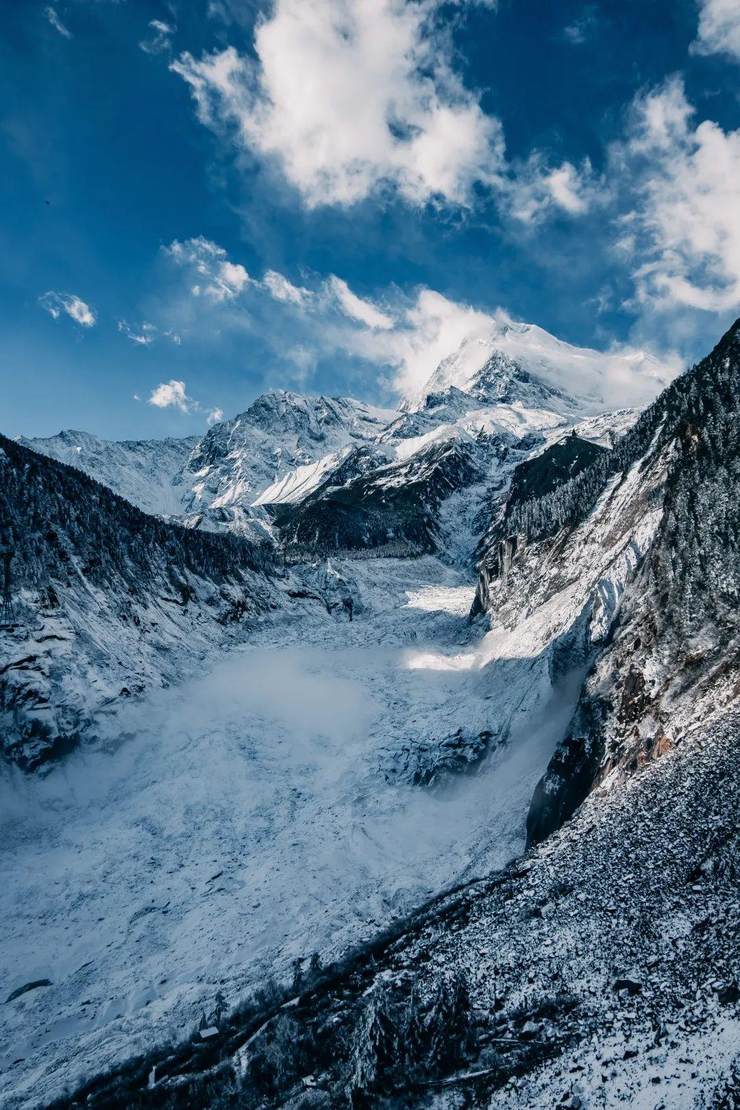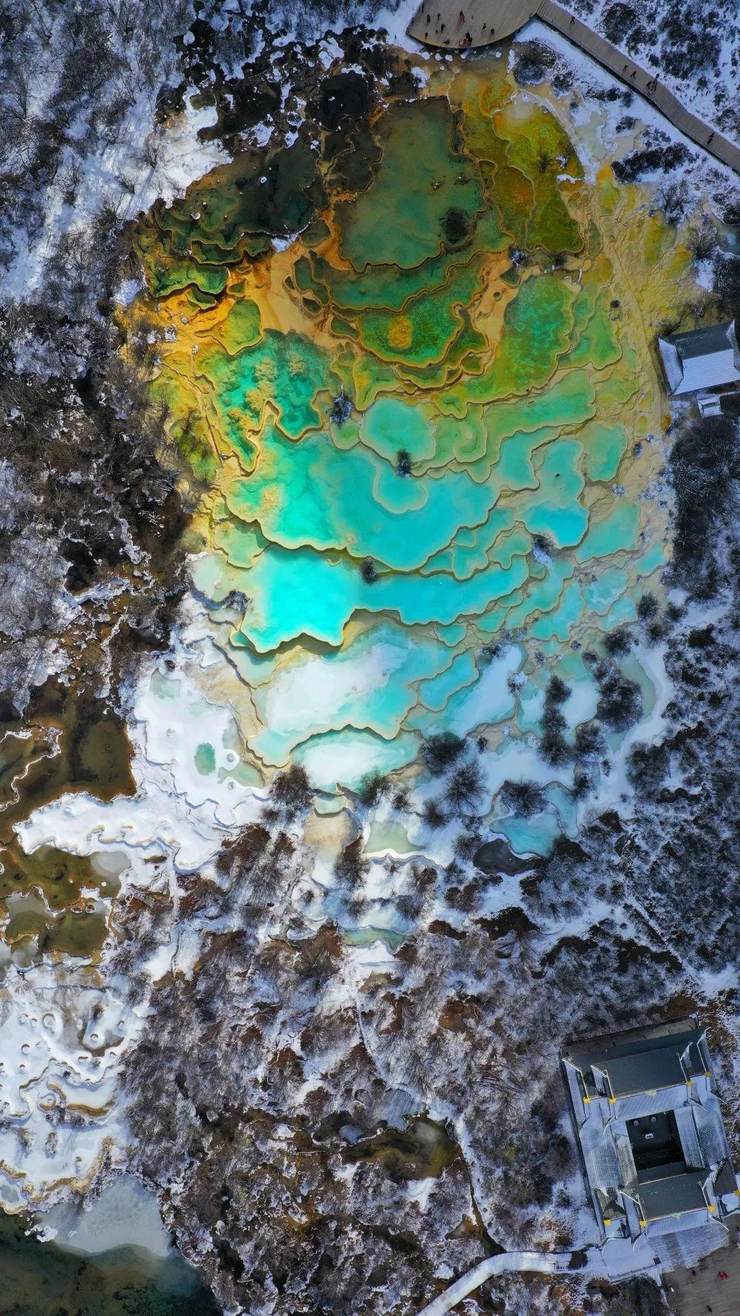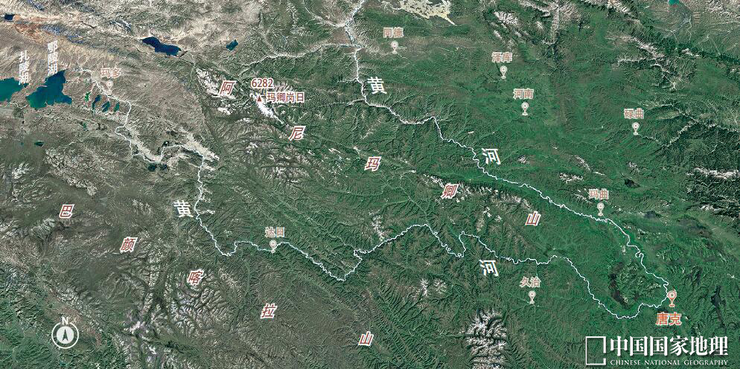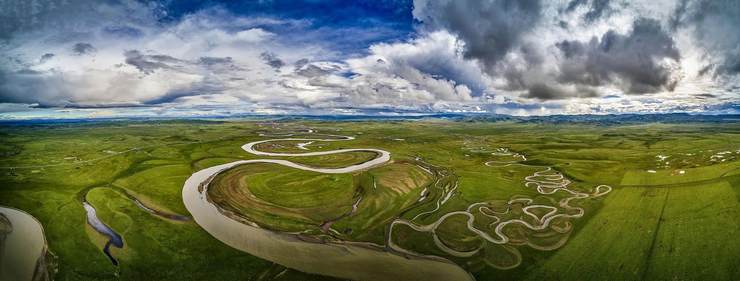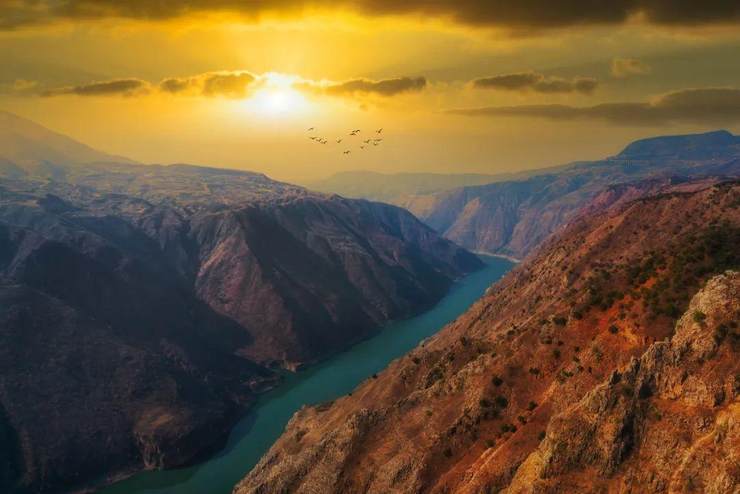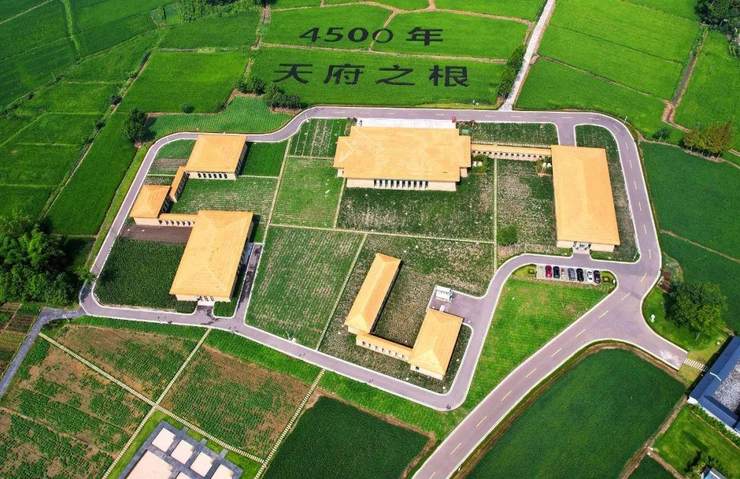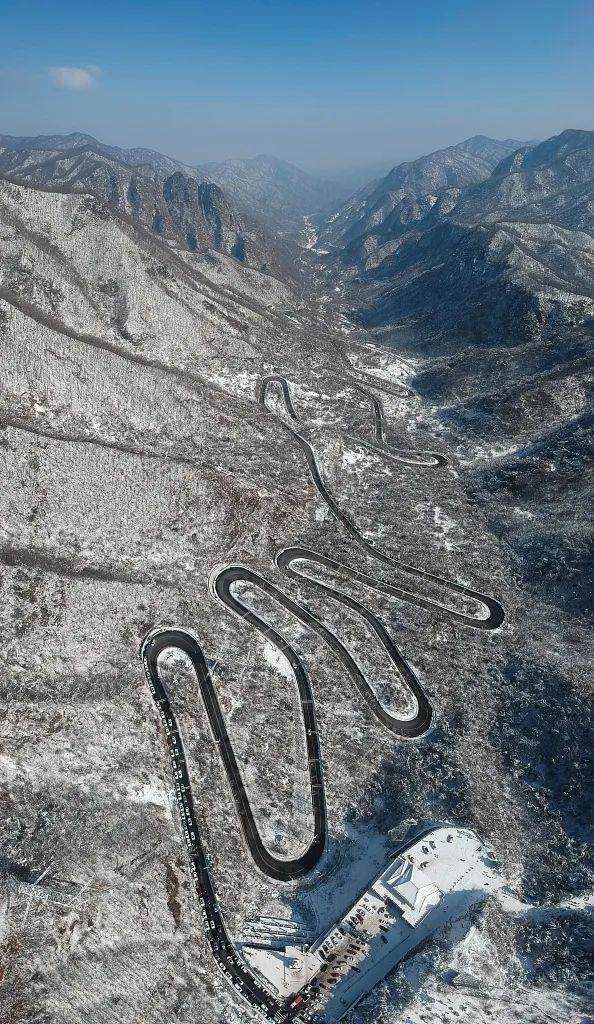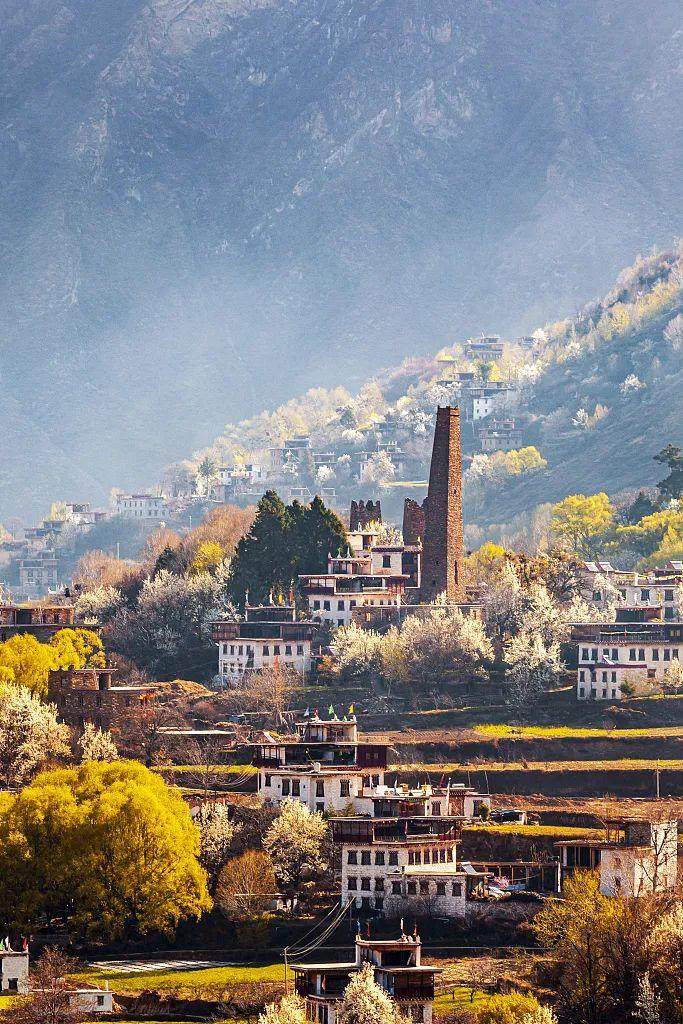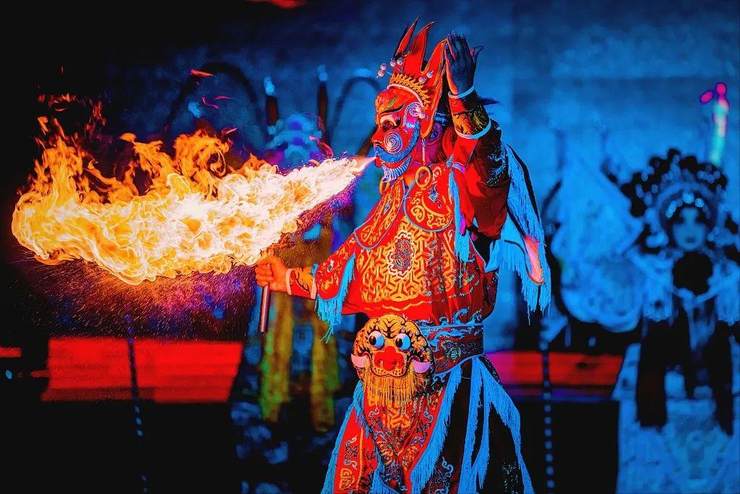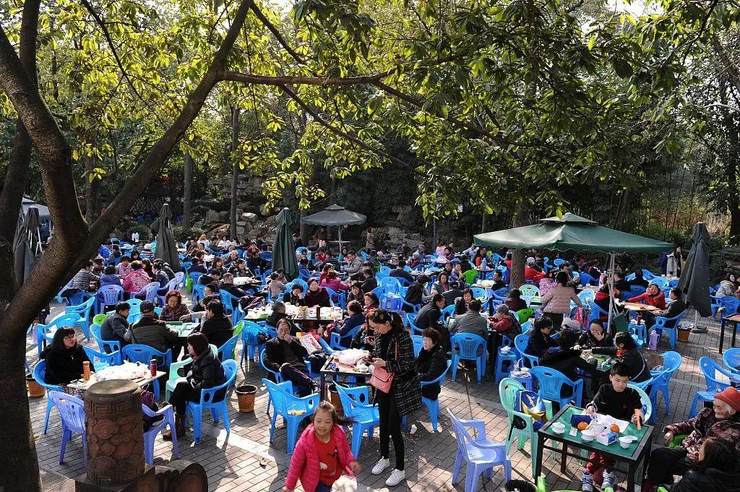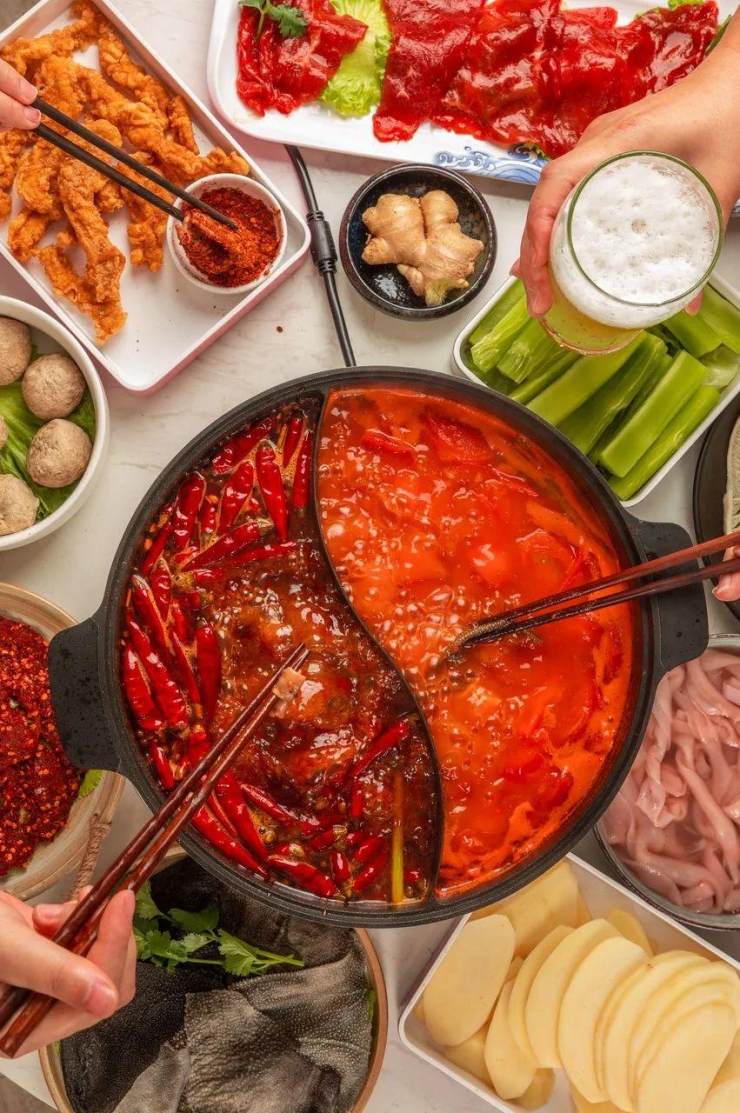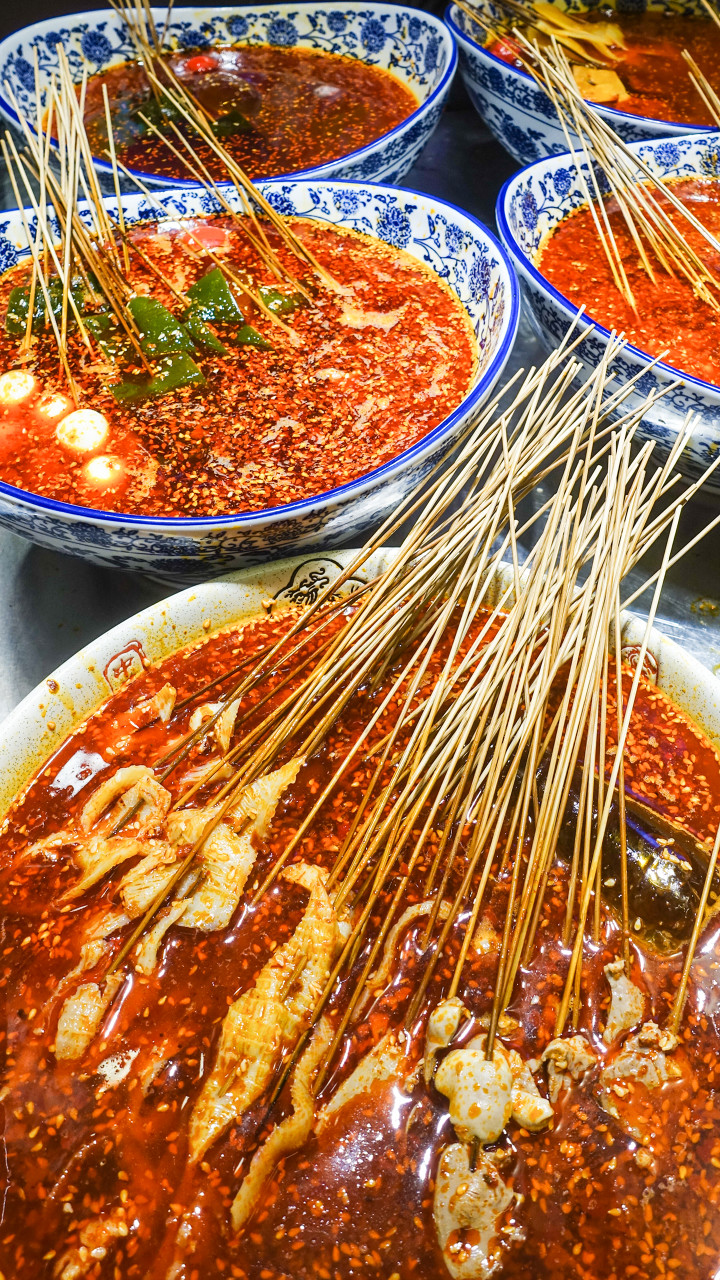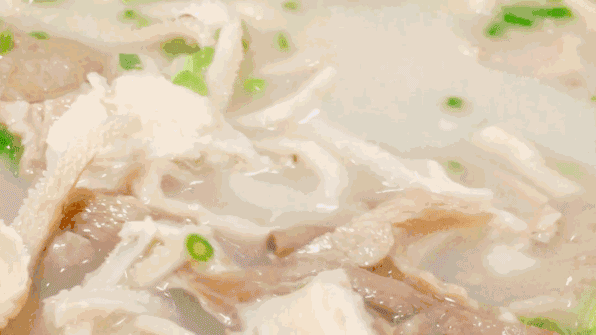What do you think of when you mention Sichuan?
It is a land of abundance that "realizes the freedom of pandas",
It is still spicy and delicious in the streets,
Mount Emei, Jiuzhaigou, Huanglong, Ruoergai, Daocheng Yading, Lugu Lake ....
Under the double stimulation of tongue tip and eyeball,
Don't forget to add: Sichuan is really comfortable!
It is said that Sichuan is good, but what is good about Sichuan?
God Prefers Sichuan
Among the three terraces of China's topography, Sichuan is located in the transition zone between the first level - the Qinghai Tibet Plateau and the third level - the middle and lower reaches of the Yangtze River Plain. There is a great disparity in elevation, and the terrain is complex and diverse. There is no geographical vocabulary that can completely summarize the landform of Sichuan.
Daocheng Yading, known as "the last Shangri La"
This land covers an area of 486000 square kilometers. At the same time, it has four major geomorphic forms of mountains, hills, plains and plateaus. It also presents a huge basin - Sichuan Basin, surrounded by many mountains, such as the Qinling Mountains, Micang Mountains, Qionglai Mountains, and so on. Different styles of natural landscape are intertwined here.
Giant painted snow mountains in Chengdu Natural History Museum
In Sichuan, there are 7 world heritage sites, 3 world geoparks, 4 world biosphere reserves, and more than 4000 tourist attractions. The tourism resources rank first in China, and 145 national key protected wild animals rank first in China.
It is "strange" that God loves Sichuan too much. It seems that everything "beautiful" wants to give Sichuan more.
Sichuan, my gentle hometown~
The world-famous Mount Emei and the largest cliff stone statue of Leshan Maitreya Giant Buddha in China are both Buddhist resorts and have been looking down on the masses of people for thousands of years. There is also Qingcheng Mountain hidden by the bank of Dujiangyan, which tells the world with thousands of steps of Danti and winding paths leading to seclusion. Why do you sincerely ask.
The mountains in Sichuan can not only be "famous mountains" with strong cultural atmosphere, but also "holy mountains" created by the uncanny workmanship of nature.
The rise of Hengduan Mountains has made many famous snow mountains appear on this land: Minshan Mountain, Qionglai Mountain, Daxueshan Mountain and Shaluli Mountain, which are closely arranged in north-south direction. As the treasure house of China's ultimate landscape, Hengduan Mountains are located at the junction of Sichuan, Yunnan and Tibet, and its area is also larger in Sichuan Province.
In southwest China, a group of north-south mountains, Jinsha River, Lancang River, Nu River and other major rivers running parallel to the south gather here to "cut off" east-west traffic, hence the name "Hengduan Mountain". Source: China National Geographic 2010 Issue 07
What's more interesting is that although the number of snow peaks here is less than that in Tibet, and the terrain is lower than that in Tibet, the relative height is higher than that in Tibet. Strong elevation difference, natural and rich vegetation, white snow and green vegetation coexist, which is a unique beauty of extremely high mountains.
Shan Zhiqiang, executive editor in chief of China National Geography magazine, has therefore put forward the concept of "looking at the mountains should look at the extremely high mountains", which has led people to appreciate the snowy mountains.
Hengduan Mountains in Western Sichuan Plateau
Among them, Gongga Mountain (7556 meters), the main peak of the Great Snow Mountain, is towering into the sky. As the first peak in Sichuan, it is only 90 kilometers away, and its relative height difference has reached 6000 meters. Visually, it is even more towering than Mount Everest.
Abundant rainfall has brought excellent conditions for the development of glaciers in the mountainous areas of western Sichuan, including Hailuogou Glacier, Dagu Glacier, and Xuebaoding Glacier (the easternmost glacier in China), which together outline a magnificent glacier world.
The ice and snow melt water from Xuebaoding flows through the exposed zone of carbonate rock, and calcium carbonate dissolved in flowing water is deposited again, forming a colorful Huanglong travertine Tianchi. Seen from a high altitude, the 1300m long natural travertine beach, with 5000 large and small calcification pools hidden in high mountains and deep valleys, is a world-class travertine landscape.
Huanglong Calcification Beach is like a dragon scale
If you go 100 kilometers further north, Jiuzhaigou, which is deep in the canyon, is famous for its peerless beauty. "Return from Jiuzhaigou without looking at the water", her beauty is unforgettable to all who have been here.
Countless rivers start from the snow capped mountains and plateaus and rush out of the ridges, making it a land with developed water systems and dense rivers.
Who would have thought that the Yellow River Basin, which stretches across the northern Xinjiang, would also sneak into Sichuan to brush the border, distribute a big turn to Sichuan, and then turn around again. In China, in addition to Qinghai, the birthplace of the two mother rivers, there are more provinces in Sichuan that can accommodate both the Yangtze River and the Yellow River.
The Yellow River has come to Sichuan due to the blocking of the Animaqin Mountain. The "big turn" here is nearly 40 kilometers in diameter, and you need to take a plane to see the whole picture
It is precisely because of this encounter of the Yellow River that Ruoergai has a wetland grassland, with a total area of more than 900000 hectares. It is the largest and best preserved plateau peat swamp wetland in the world today, and has been rated as the first of the "six most beautiful wetlands in China" by China National Geographic magazine.
Ruoergaitangke "the first bend of the Yellow River in nine bends", only the bend, not the "first bend"
Sichuan Province has a dense river network, known as "the province of thousands of rivers". There are thousands of rivers in the territory, which belong to the Yangtze River and the Yellow River.
But generally speaking, the rivers in Sichuan are mainly the Yangtze River system. Yalong River, Anning River, Dadu River, Qingyi River, Minjiang River, Tuojiang River, Fujiang River, Jialing River, Qujiang River... The large and small tributaries of the Yangtze River linger like blood vessels on the mountains and basins.
The First Sichuan Tibet Bridge, Luding Dadu River Bridge of Yakang Expressway
Actually, Lugu Lake is not only in Yunnan, but also 2/3 of its shoreline is in Sichuan. Hidden deep in the mountains, it belongs to the Jinsha River system, known as the "Oriental Daughter Kingdom", and is the third largest deep-water lake in China. The water and the sky are the same color. Mysterious Mosuo people stick to this land.
The grass sea of Lugu Lake is in the southeast of Lugu Lake, under the jurisdiction of Zuosuo Township, Yanyuan County, Sichuan Province
In the magnificent Hengduan Mountains in the west, the surging rivers endow the surrounding mountains with charming or magnificent vitality. Jinsha River Canyon, Yalong River Canyon, Dadu River Canyon, these steep areas are not only recognized as hopeless, but also a treasure land full of ancient mystery.
Jinsha River Grand Canyon, Panzhihua, Sichuan
It can be said that from the Chengdu Plain, which is about 600 meters above sea level, to the Western Sichuan Plateau, which is more than 4000 meters above sea level, from the vast forest to the grassland and snow, from the tranquil lake like a mirror to the surging rivers, Sichuan is full of scenery, and the beautiful places can naturally breed a group of "Bashi" Sichuanese.
Water and soil are good for supporting people
As the old saying goes, "When you are young, you will never enter Sichuan, and when you are old, you will never leave Sichuan". The land of abundance is actually the land of gentleness. If you look at Sichuan from a satellite perspective, the dense population distribution in the east is in sharp contrast to the vast land in the west. This pattern is very similar to the eastern and western map of China.
"Hu Huanyong Line" marks the contrast line of population density in China
It can also draw a line of strong differences in Sichuan, which is like a microcosm of China
Another interesting phenomenon is that Bashu is located in the "two river basins" in the hinterland of East Asia between the Yellow River and the Yangtze River. At the same latitude, there are also Mesopotamian civilizations in West Asia. They all have similar geographical conditions: fertile land, abundant rainfall and abundant products. Superior geographical conditions and beautiful mountains and rivers naturally breed brilliant civilization.
According to archaeological evidence, there were human activities in Sichuan more than 2 million years ago. In 4000-5000 years ago, a group of ancient Qiang people who migrated from the Qinghai Tibet Plateau settled in western Sichuan. They built stone castles, built squares, built the Kingdom of Ancient Shu (the first king: Silkworm), and jumped into the embrace of the Chengdu Plain along the river. Since then, the Chengdu Plain has become the origin center of the regional culture in the upper reaches of the Yangtze River.
Xinjin Baodun Cultural Site
At present, a large number of ancient cities and settlement sites dating back more than 4500-3700 years can be found on the banks of these Minjiang River veins, such as Dayi Gaoshan Ancient City Site, Dujiangyan Mangcheng Site, Xinjin Baodun Site, etc.
"Silkworm and Yu Fu are at a loss for the founding of the country. I am 48000 years old and have no connection with Qin Sai." Li Bai, a poet of the Tang Dynasty, lamented the remoteness of the deeds of the founding monarch of Shu in his book Shu Dao Nan. However, due to its long history, the records about Cancong are vague and vague. It was not until the discovery of Sanxingdui Site in Guanghan that the mystery of Cancong's appearance was solved.
According to the Records of Huayang State, the King of Cancong "became the king when his eyes were vertical"
The bronze mask of "Zongmu" unearthed from Sanxingdui Site is considered to be the incarnation of King Cancong
The Sanxingdui culture, which created the bronze culture of "awakening and shocking the world", and the golden foil of the sun god bird forged in Jinsha, are the political, economic and cultural center of ancient Shu.
Golden Ornament of Sun Bird at Jinsha Site
The closed mountains add a layer of mystery to the ancient Shu culture. The mountains encircle the Sichuan Basin, which makes Li Bai exclaim: "It is difficult to go up to the sky on the way of Shu".
The ancient orogeny made Jianmen Pass form hundreds of miles of stone walls, and the natural city wall became a barrier in northern Sichuan
However, Sichuan also occupies an important geographical position. It borders Chongqing, Guizhou, Yunnan, Tibet, Qinghai, Gansu, and Shaanxi provinces, and is an important traffic artery for communication between provinces. Chencang Road, Baoxie Road, Tangluo Road and Ziwu Road across the Qinling Mountains, and the Ancient Tea Horse Road connecting Tibet have been successively connected.
Chencang Ancient Road, located in Baoji, Shaanxi Province
The Hengduan Mountains, which run from north to south, cut across the east and the west, but connect the north and the south. The Bashu culture also brings the possibility of expansion to the north and the south. Historically, the ancient ethnic groups migrated from north to south along the valley, forming a famous ethnic corridor - Tibetan Yi Corridor, making Sichuan today the second largest Tibetan inhabited area, the largest Yi inhabited area and the only Qiang inhabited area in China.
Sichuan Danbajia Tibetan Village, a picturesque village
Later, Li Bing, the governor of Shu Prefecture, and his son built the Dujiangyan Water Conservancy Project to further strengthen the flood control and disaster prevention work in western Sichuan, so that the Chengdu Plain "depends on people's flood and drought, and knows no famine". Since then, Sichuan has been called the "Land of Abundance".
Baopingkou is the water inlet throat of Neijiang River and the key water conservancy facility for "water and drought follow people".
Today's Sichuan people still do not abandon the tradition. What remains in their bones is the comfort and ease. It's fun to have tea and play mahjong with friends. What's more, there are also good mountains and water.
"Sichuan Opera is the best in the world". The picture shows the face changing and fire spitting of Sichuan Opera
It's a rare sunny day in Chengdu, where citizens drink tea, chat and play mahjong in open-air teahouses
Sichuan Flavor Conquers the World
Food is the most important thing for people. People living in the "Tianfu" must be comfortable with their food. The world has always been conquered not only by the human beauty of Sichuan, but also by the unforgettable Sichuan cuisine.
First, name the dishes: hot pot, string, Dongpo elbow, Jianyang mutton soup, Leshan bowl chicken, Qiaojiao beef, sweet duck, Mianyang rice noodles, Jiangyou fat sausage, cold eating rabbit, Lizhuang white meat, Chuanbei bean jelly, Langzhong beef noodles, Wusheng beef, Dazhou Dengying beef, Gulin spicy chicken, Yibin burning noodles, Fushun bean curd, Laoma hoof flower ... Whenever a city in Sichuan is mentioned, the first thing I think of is its food, which is its magic.
Of course, Sichuan flavor has not been achieved overnight. The reason why Sichuan cuisine has such a rich taste cannot be separated from the nourishment of this land for thousands of years.
We are now eating Sichuan cuisine with spicy flavor, which probably took shape in the late Qing Dynasty. In the early Qing Dynasty, people from Hunan, Hubei, Jiangxi, Shaanxi, Shandong, Guangdong, Guangxi and other provinces came to the migration tide of "Hunan and Guangdong fill Sichuan". Of course, with their preferences and delicacies, they finally evolved the Sichuan cuisine that today embraces all rivers.
In the "Nine Bowls" banquet, there is a main food Guokui, which is a copy of Shaanxi flavor from name to reality, and gradually refined in the follow-up development; Boiled cabbage, a famous Sichuan dish, is the essence of its delicious but clear soup, which is the way of using Shandong cuisine to hang soup; Pixian douban and Deyang soy sauce can still see the way of Jiangxi cuisine.
Today's Sichuan cuisine also falls into different categories. The "Chengdu style Sichuan cuisine", led by Chengdu and Leshan in western Sichuan, focuses on fine and accurate ingredients and follows traditions; The Yanbang cuisine represented by Zigong in southern Sichuan focuses on "thick, fragrant, spicy and fresh". In the eyes of foodies, Sichuan is a food map, and every place has one or two representative Sichuan food.
Salt Gang Cuisine Zigong Cold Eating Rabbit
Of course, Sichuan cuisine is not only spicy, but also has the unique temptation of western Sichuan cuisine. Butter tea, Zanba, Tibetan pig and other Tibetan delicacies,
In Sichuan, every taste bud can find its own destination.
The magnificence of mountains and rivers, the flexibility of ancient towns and lakes, the continuous grassland wetlands and the charmingly naive giant pandas together outline a "land of abundance" with thousands of faces. In addition, a comfortable Sichuan has been built with the witty Sichuan dialect, lovely Sichuan people, spicy Sichuan flavor, and mahjong sound of street tea houses.
The number of people who traveled during the Spring Festival holiday this year was listed. Sichuan received a total of 53.8759 million tourists, ranking first in the number of tourists received nationwide.
Sichuan is really comfortable!
This article creation team
Editor: Guang Ping
Design: Weiwei
Picture: Visual China, Pictorial Insect
[References]
[1] Bai Lang, a sealed but not closed basin, shocked the people from Sichuan out of the sea National Geographic of China, Issue 09, 2003
[2] Han Tao, Sichuan is full of delicious foods Chinese Heritage, Issue 06, 2016
[3] Dan Zhiqiang, why is the Yellow River so curved? China National Geographic, Issue 10, 2017
[4] Li Xiaobo et al., Chengdu Plain China National Geographic, Issue 02, 2008
[5] Zhiqi, where do people from Sichuan come from? Chinese Heritage, Issue 11, 2020
[6] Qi Junkai Why should Sichuan break through against the trend? [J] Sichuan Provincial Situation, 2023 (01): 38-42
[7] Lei Chunping Research on Evaluation of Tourism Industry Competitiveness in Sichuan Province [J]. Cooperative Economy and Science and Technology, 2022 (14): 4-9
[8] The scene is far and bright Analysis on the Development and Utilization of Geological Tourism Resources in Sichuan [J]. Resources and Human Settlements, 2021 (11): 47-50

